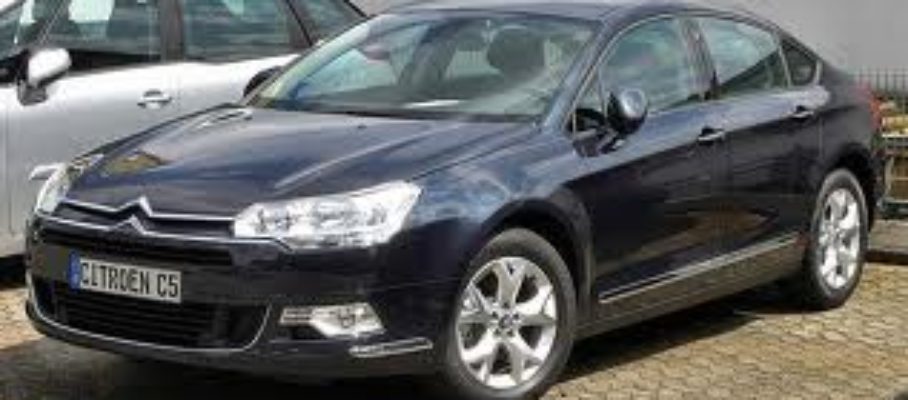Dec 7 2011
Did Citroen Use Too Many Phone Calls and Emails in Developing the C5?
Wiegand’s Watch is a monthly letter from Dr. Bodo Wiegand, who runs the Lean Management Institut, the German affiliate of the Lean Enterprise Institute. This month, he focuses on what he perceives to be a wasted use of email and cell phones in the development of the Citroen C5 car. Following is a translation of his letter, followed by my comments:
€ 16 million wasted in the development of the C5 car
Today I was at the airport and saw a billboard.
The development of the C5 at Citroen used 1,410,475 cell phone calls and 3,155,546 e-mails. This is madness. If a phone conversation lasts an average of 2.5 minutes, it works out to 14 670 man-days or 73 man-years.
Assuming writing a technical e-mail on average takes four minutes and that it is read six-times, then these emails took up 65,741 man-days or 321 man-years. Assuming that 50% of these cell phone calls and 50% of e-mails were necessary but non value-added, this adds up to 40,000 man-days or 200 man-years, or € 16 million were needed to do the following:
- Fix processes that are out of control.
- Define nterfaces that were not specified.
- Rethink procedures with qualitative gaps.
- To answer questions.
- To solve problems.
What a huge waste!
What a potential for improvement!
And Citroen boasts about it.
My first reaction is to wonder what is wrong with >1,000 people involved in a multi-year project like the development of a new car communicating extensively? It brings to mind Frederick Brooks’s famous audit of the Tower of Babel project in The Mythical Man-Month. The goal was clear and its lack of feasibility played no part in the failure. Human and material resources were plentiful in Mesopotamia, and were not a problem either. What caused the project to fail was that team members could not communicate.
Product development generates many documents that need to be reviewed, discussed, annotated, updated, revised, and organized. These documents must also be available easily to all those with a need to know, and kept secret from all others. I don’t know on what basis Dr. Wiegand concludes that a large part of Citroen’s communications by phone and email were waste. For all I know, they may have been meaty technical exchanges that improved the design of the C5…
Of course, you don’t need electronic means of communication if everybody is in one big room, but that only works for teams that are small enough. You would need a convention hall for a team in the latter stages of car development, and some activities, like testing in a hot desert or snow, or ramping up production, take place at multiple locations. While always desirable, face-to-face communication is not feasible for everything at all times.
Just based on the statements from Citroen, if I would fault them for anything, it would be for relying on nothing more sophisticated than phones and emails, which is so 20th century. There are now collaboration and on-line meeting tools that combine much richer exchanges with better data security and revision control. For example, engineers at different locations can view the same drawing on their screens, annotate it while discussing through an audio conference, and read each other’s body language through webcams.
Instead of having multiple copies of documents floating around in individual mailboxes, you can keep them in a library on a server to ensure that all participants in a discussion are looking at the same version, and to prevent these documents from leaking out.
You can also fault emails for lacking the kind of structure you find in A3 reports, which discipline authors in providing particular data items while helping readers find them. But again, more advanced communication tools can provide that structure through on-line forms .
For voice communication, there are also alternatives to cell phones. For people whose work causes them to move around within the range of WIFI network, for example, there are wearable devices that allow them to call each other by name and communicate by voice instantly, as if they were side by side.
So maybe the issue is not that Citroen C5 development used to many engineer-years communicating, but that, next time, they should use the state of the art to do it.

December 9, 2011 @ 5:53 pm
The old “saw” about the “Cobbler’s kids who went barefoot” certainly comes to mind in this example!
January 9, 2012 @ 10:53 am
Comment on the Ecole des Mines de Paris Alumni discussion group on LinkedIn:
January 9, 2012 @ 10:55 am
I suppose I did not make this clear enough, but my post was critical of the effort to measure such things. I was responding to a publication by Bodo Wiegand, and saying that I didn’t see much point in criticizing the Citroen engineers for communicating while developing a product.
The reason I paid attention to Bodo Wiegand is that he runs the German affiliate of the Lean Entreprise Institute.
Best regards.
—
Michel Baudin